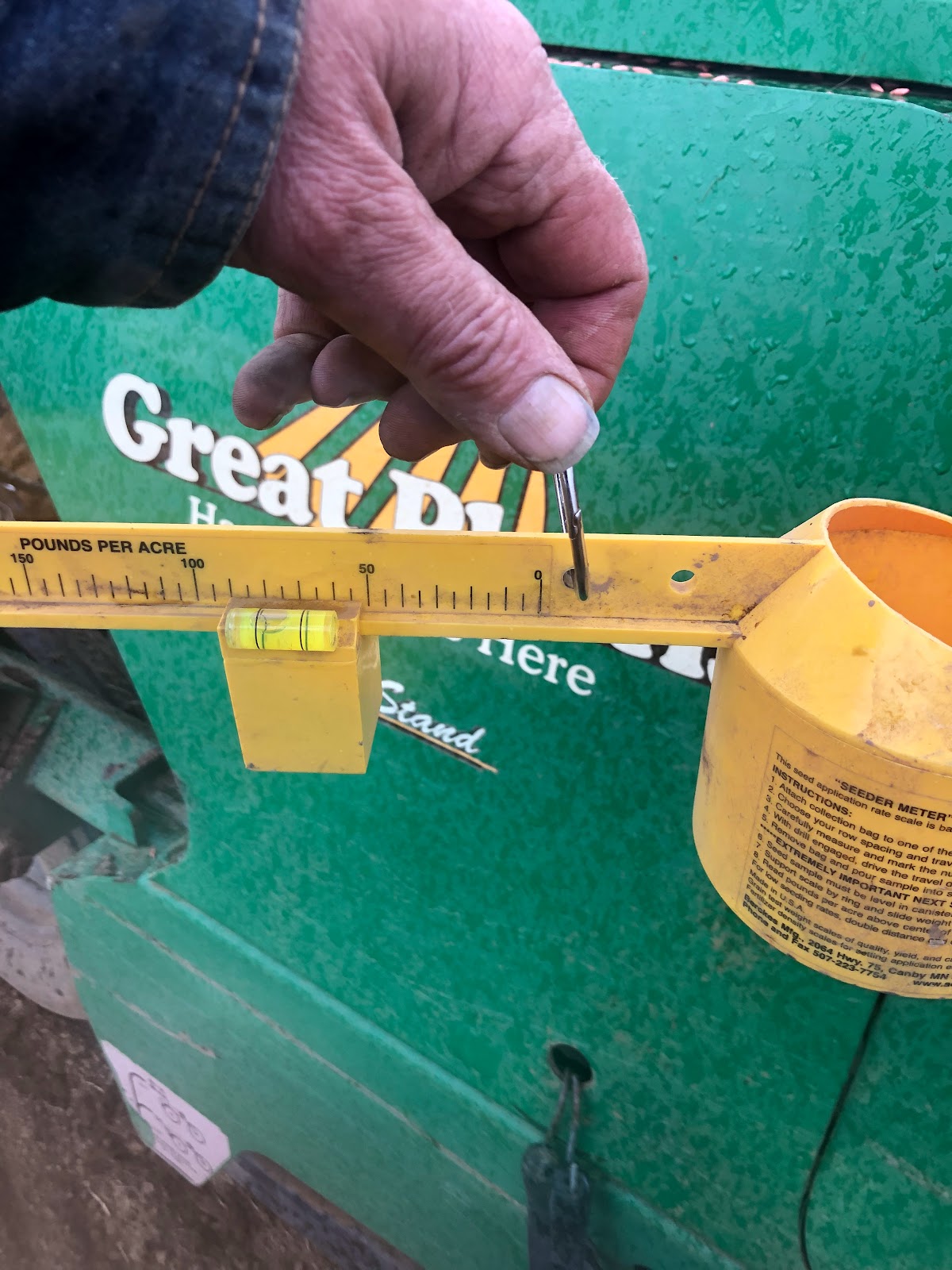There is nothing more maddening then to discover you are five acres short on a fifty acre field and it is after 5 p.m and it is going to rain tomorrow.
My favorite way to calibrate my grain drill is the Seeder Meter (acusale.com). This tool was invented by Dave Berckes of Minnesota. Now I have written about this before but I have to write about this again because I love it.
It is so simple that it genius. It is just a scale which is calibrated according to drill row spacing and distance covered.
You drive the distance and put the collected seed into the scale cup. There is a little ring by which you hold the scale and a level bubble on a sliding weight.
To use it you pull off one seed tube and put a bucket under it. You look up the chart printed on the scale and drive the distance according to your row spacing. You can also use two tubes and drive half as far. I generally can set the drill pretty close going by my book so I just fill up the whole drill and use the Seeder Meter to fine tune the drill.
I just keep a wire or a bungie cord on the side of the drill and use it to hold the bucket to collect seed from row one. This way I don't need to make a skip row. I just overlap a little on the next pass.
I do some specialty seed which is not on the chart. Generally I can pick similar seeds out of my chart or off my records and set the drill close. Then I just pile the seed over one row and drive the distance.
I have planted really light seeds and used different spacings which are not on the chart. You can compensate by driving twice as far and diving the rate on the scale or using more tubes.
There is a chart on the side of the scale which has row spacing and the distance needed to drive to get the required amount to get the weight right.
The Seeder meter is not the best for light seed especially if it is windy. In that situation I lift the drill and turn the wheel by hand. For example if I am planting 2 lbs per acre on 15" spacing the weight is going to be pretty light so I have to do some planning as you are not going to get a lot of seed in 115 feet.
Generally I am planting 7.5 inch spacing so my distance is 232 feet so I do try to get the rate pretty close to start with as that is a fairly long distance to drive.
Of course the issue is measuring the distance. I have a magnet wheel sensor on the drill so I can use an electric acre counter sent to feet. The other tool I have is a GPS speedometer which I can connect to a Microtrak Calc-an-acre or SprayMate to measure distance. This helps out considerably.
It doesn't matter if you drive a couple feet too far. Of course I do also try to count the number of seedbags and the number of acres I am getting per bag just to keep myself honest.
I find the sensor-1 GPS speedometer very handy. It also puts out a pulse for an external controller like this MicroTrak FlowMate II. You can also use the Sensor-1 to check calibration on your external flowmeter or acre counter. The GPS sensor is always correct so you can compare speeds on your magnet sensor device or meter which needs calibration.





Looks like a good working setup. Calibration becomes ever more important as seed prices get higher all the time. Over $800 for a bag of canola seed last time I checked.
ReplyDelete